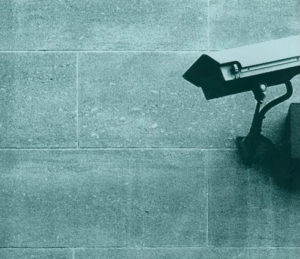From “who do you trust?” to “how do you trust yourself?” – a ‘trust & power’ synopsis
We feel the need to be able to ‘trust’ the people we work or collaborate with to feel safe to grow and learn and succeed. One presentation at Berlin Change Days 2017, whose theme was ‘Power & Trust’, gave eight ‘pillars of trust’: honesty, reliability, transparency, clarity, credibility, fairness, keeping promises and respect. But the relationship of trust to power is complicated.
In 2017 a majority of citizens of the USA entrusted Donald Trump – a man who consistently and audaciously defies all eight pillars of trust – to rule their country, still the most powerful nation on earth. He was elected not because he is honest, reliable, transparent, clear, credible, fair, keeps promises and is respectful, but because he told people what they want to believe, and promised them what they want to have:
that they’re losing because the system’s rigged and everyone else is cheating;
that the outside world is full of dangerous enemies;
that he can make America safe again;
that he can make America great again.
Every con artist knows that the more you desire something – whether it’s methamphetamine or a pipe dream – the less you need the eight pillars of trust to believe in someone or something. The four balls that a con artist juggles are a knowledge of your desire/fear (desire and fear are flip sides of the same coin), a knowledge of the urgency of that desire/fear, an ability to win your trust, and a willingness to exploit you. Catholic confessionals, Facebook, and the rollout of China’s Social Credit System all have one thing in common: people will trade their trust for enough of what will quell their fears and stoke their hopes. We’re willing to buy entrance into the Kingdom of God, social connection, or public status by entrusting our personal data on our relationships, our networks, our purchases, our locations, our ideas, our questions, our convictions, our addictions, our perversions, our sorrows, our hopes and our dreams. From priests and gurus flogging heaven and enlightenment, to slick salespeople selling the cure-all pill, to politicians from the Kremlin to Capitol Hill, to get-rich-quick schemers to weight loss dreamers to leadership beamers; there’s people who know how to play our vulnerabilities by offering a quick fix for the discomfort that lies there.
This prey of power on trust is nothing new. We can all be predatory, and we can all be vulnerable; we’re all, after all, deeply and blessedly human. As Julie Diamond writes in How to Build Trust: Break It First, “No one is ever fully trustworthy… being fully trustworthy is not possible… There are a million reasons why, in any given moment, our behavior undermines our trustworthiness.” So the question ‘Who do you trust?’ is really not that useful. You can trust anyone at least a little, and you can trust no one absolutely. A more useful question is ‘How do you trust?’.
Adame Kahane has been called in to set up collaborations in conflict zones from apartheid South Africa to the civil and drug wars of Colombia. His new book, entitled ‘Collaborating With the Enemy: How to Work with People You Don’t Agree with or Like or Trust’, is dedicated “To my enemies and teachers.” Kahane argues that the rules of conventional collaboration – harmonious communication, shared goals, common purpose, trust – no longer apply in a VUCA world. He proposes ‘Stretch Collaboration’ for situations where participants not only disagree on what the solution is but even on what the problem is. In these situations increased connection also increases the possibility for increased conflict. “when we are in complex, uncontrolled situations, where our perspectives and interests are at odds, we need to search out and work with our conflicts as well as our connections. We need to fight as well as talk.” By stretching beyond the assumptions of conventional collaboration Kahane has seen participants collaborate “without having a single focus or goal… without having a single vision or road map… without being able to change what others were doing.” Kahane has seen Stretch Collaboration succeed in situations in which there is no trust.
Trust is beautiful; the tether of all relationships, it’s a fundamental human need to trust and be trusted. For this very reason trust also becomes a lever for power. We trust too much, and become untrustworthy ourselves, precisely where we have urgent and unmet needs, holes that need to be filled. We need someone or something to fulfil the part of ourselves that we can’t fulfil ourselves, and this can make us vulnerable and manipulative. The response to the question of ‘how do you trust?’ can only be ‘how do you trust yourself?’. We learn to trust ourselves by soldiering into the swamplands of our ‘beautiful need’ and for this transformative journey we need to be as courageous as warriors.





 The KGB or the CIA in a decade of surveillance and informants couldn’t secure the detail of information on a citizen that billions of people voluntarily pump into Google and Facebook in a month. This notion is taken to a whole new level in a government ‘Social Credit System’ being rolled out in China for 2020
The KGB or the CIA in a decade of surveillance and informants couldn’t secure the detail of information on a citizen that billions of people voluntarily pump into Google and Facebook in a month. This notion is taken to a whole new level in a government ‘Social Credit System’ being rolled out in China for 2020